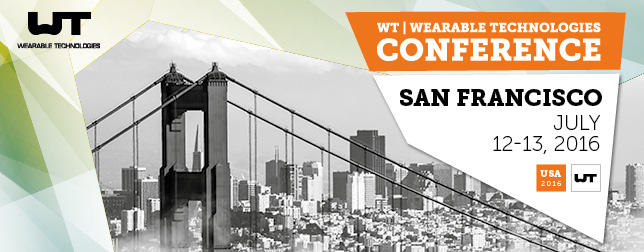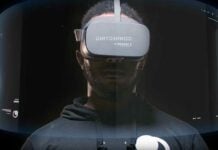Sweat can tell us a lot about our body. We talked to expert Cesare Bazolli from HFT to tell us more about their innovative product that “reads” your sweat.
- Can you tell our readers what HFT smart sensors is about?
HFT smart sensors is a company devoted to the realization of innovative wearable devices to monitor in non-invasive way biological parameters during sport training, competition and in everyday life. Our technology is based on new wearable textile biosensor that measure critical parameters in human sweat. There is a huge amount of crucial information that our body could communicate to us, and actually are still ignored, these data are in the molecules and electrolytes that our body expel in the sweat, during a sport activity. These biomolecules could tell us the reasons why our performances in a sport activity change, reduce or enhance and also if an activity is healthy for us. To monitor these biomolecules, we need a wearable and non-invasive device, that can be used without even feeling it. We developed innovative biosensor devices directly made on textile, that can be used very easily and provide crucial information, that other devices based on physical measurements (like hart rate and accelerometer) could not read.
- How does it work?
Our technology is based on the idea to realize innovative biosensors directly on textile. Textile devices allows a complete comfort and a perfect feeling on the skin, and most important, textile fibers naturally absorb the human sweat. In this way our devices are able to monitor different analyses in human sweat. In particular: electrolyte concertation, like sodium and potassium, different crucial neuro transmitters, like adrenaline and dopamine, and we are working on lactate and glucose sensors. We have realized a special t-shirt that integrate our technology, with the sensors and a removable reading electronic. The electronic system could communicate the data by blue-tooth to a smart phone or register them in a memory. The data could be visualized by an app on a smart phone (or a smart watch) for a live reading of the parameters. Then the data are collected in a private cloud, and analyzed in detail with big data approach, to extract all the useful information. In this way the performance could be compared in time, in function of different training parameters. The knowledge of detailed biochemical information directly from our body, in all the possible conditions of everyday life, is an unprecedented advantage in improving sport performance and health in general.
- How did you come up with this idea?
We realized that a lot of information naturally move out from our body in our biological fluids, and in particular in human sweat, and we throw this information away every day. We thought that if we had a system that could read all these data, we could change the history of sport training. Naturally, we understand that a biosensor system like this, should be totally comfortable and easy to use, to reach a complete success. The most comfortable device to wear, for us, is the one that is made by the same materials of our cloths: the textile fibers.
- In which ways can sweat monitoring help to improve the athletic performance?
There are many crucial parameters that are contained in our sweat. First of all, the electrolytes, like sodium, potassium, calcium and magnesium. These electrolytes are responsible for the communication between nerves and muscles and the lowering of these electrolytes could cause cramps and problems in motion and coordination. Monitoring the changing of these parameters during a sport performance could give us the knowledge of what is effectively appending in our body, and what could happen next. Other crucial molecules are neurotransmitters like adrenaline and dopamine, which are related to our reactions and our psychological and mental attitude. Then we are interested in glucose and lactate that could monitor our fatigue, energy, and the level of stress in our muscles. And the system could grow with the analysis of many other biomolecules as soon as we will develop new sensors.
- How long have you been experimenting with fibers until you found the perfect one? What were the main challenges?
We have started two years ago, there are many challenge in such an innovative approach. One of the main, is to find the perfect functionalization on the textile that is able to detect the specific molecules.
- What are the next steps for HFT smart sensors?
Having developed a sensing t-shirt that include devices and electronic reading system, we need to move to a larger production. Then a large number of data should be recoil with the improving number of devices. This allows a comparison in many different situation, and the correlation of the changes in the parameters with effective solutions to improve training and performances.
- What’s the difference in comparison to other vital sign monitoring wearables on the market?
This device is completely different from any other on the market, there is no device on the market that is able to monitor chemical properties in the human sweat, using a textile sensor that is completely comfortable and non-invasive. Physical measurements like hart rate, accelerometer and optical measurements give completely different parameters. The ability to perform chemical measurements of the substances expelled by our body is a new and unique opportunity, that allows to know what is really happening in our body.
- What is your favorite wearable device and why? (besides your own, of course)
We think that a t-shirt like the one of Comf-tech, that is able to monitor heart rate, cardio frequency and emo, with the highest possible resolution, is a great source of information. The physical information, taken at his best, could give a set of data that perfectly integrates with our devices. In fact, adding the chemical analysis of human sweat, with a detailed physical analysis we obtain the maximum in the monitoring human performances. This combination could give unprecedented results in the information during competition.
HFT will be presenting at WT | Wearable Technologies conference in San Francisco on July 12 and 13. Register here and be part of the most highly anticipated wearable tech event of the year.













